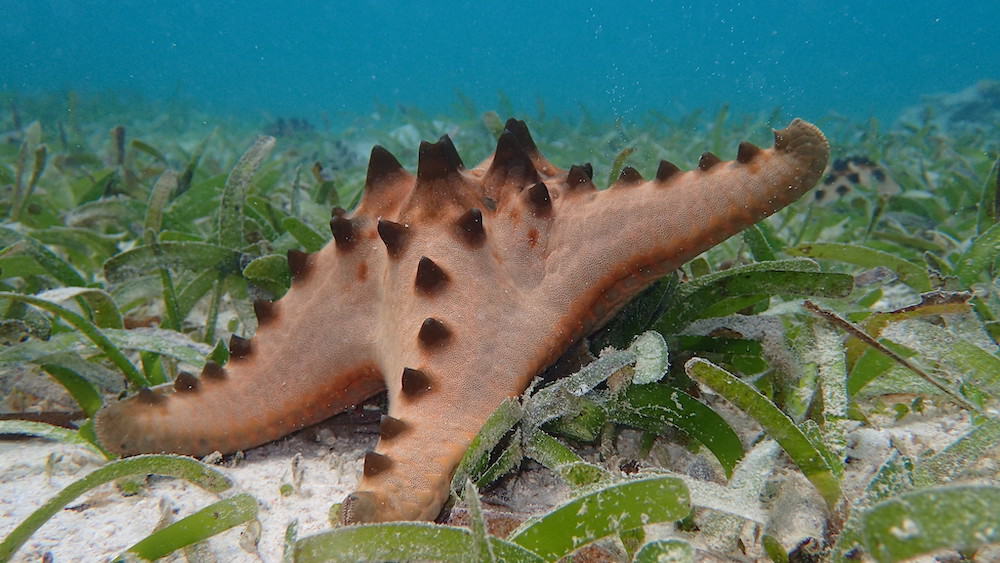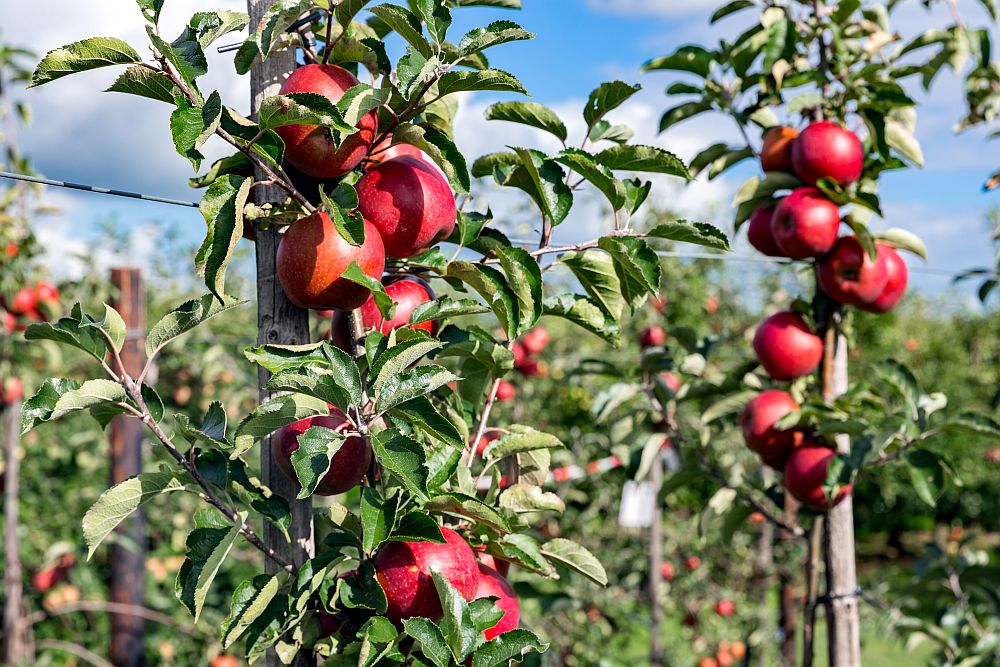
[Image above] Example of a Protoreaster nodosus, which is a type of starfish widely found in the shallow waters of the tropical Indo-Pacific. Researchers led by Virginia Tech found that the skeleton of this starfish offers valuable insights into designing strong, porous calcium carbonate. Credit: Klaus Stiefel, Flickr (CC BY-NC 2.0)
Biological oceanographers and marine biologists are not the only scientists who study marine creatures—these animals serve as inspiration for materials scientists as well.
Marine creatures including mollusks, starfish, and even sponges are of interest to materials scientists because of the surprising strength they can achieve despite having body parts made from traditionally brittle materials. The secret lies in how the materials are arranged—in other words, their structure.
Materials scientists have conducted many studies to understand and replicate these structures in the hope of developing stronger and more lightweight bioinspired materials. A new study led by researchers at Virginia Polytechnic Institute and State University further advances this goal.
Virginia Tech assistant professor of mechanical engineering Ling Li is senior author of the new study. He leads the Laboratory of Biological and Bio-inspired Materials at Virginia Tech, where researchers study the fundamental structure–property relationships in biological materials to develop new design principles for bioinspired structural and multifunctional materials.
Porosity is a particular focus in the lab, as a porous structure can allow a material to reduce its weight while retaining its strength. However, using ceramic and glassy materials to create porous structures can be difficult due to their brittleness, which can lead to catastrophic failure of the structure.
Fortunately, studies have demonstrated that mechanically efficient ceramic and glass nanolattices can be designed by leveraging the advantages of size effects and hierarchical design strategies.
Calcium carbonate is one ceramic that researchers are applying hierarchical design strategies to. This abundant, naturally occurring mineral serves numerous purposes in various industries, including as both a filler material and pigment for plastics, as an additive for cement, and as a dietary supplement for humans and animals alike.
Calcium carbonate is a brittle material, but this fact does not matter for many applications because the material often does not serve structural purposes. However, for applications such as bone tissue engineering scaffolds, the mechanical properties of calcium carbonate do matter—which gives an urgency to research identifying mechanically efficient calcium carbonate structures.
Many marine creatures have parts made from strong, porous calcium carbonate, and Li and his team have analyzed the internal skeletons of several such marine creatures, including cuttlefish and sea urchins. In the new study, they looked at the skeleton of a group of knobby starfish called Protoreaster nodosus. They found it achieved its strength through a unique structure unlike those seen in the previously studied marine creatures.
Compared to the other marine creatures, Li and his coauthors found the crystalline calcium carbonate in this knobby starfish forms in a lattice architecture with very regular arrangements of branches. In fact, the skeletal organization of this starfish exhibited the highest structural regularity ever reported from this group of invertebrates.
Looking closer, the researchers saw that the millimeter-size calcareous elements making up the lattice, called ossicles, exhibit a porous lattice-like structure themselves. Specifically, the ossicles’ microlattice exhibits a marked resemblance to a standard diamond–triply periodic minimal surface (TPMS) structure when viewed at normal to low-index planes.
“Although the existence of periodic minimal surfaces in echinoderm skeletal elements has been broadly accepted in the literature (9), to the best of our knowledge, the present study represents the first quantitative confirmation of a mineralized biological diamond-TPMS structure in nature,” the researchers write in the paper.
On the atomic scale, crystallographic mapping from electron backscatter diffraction data confirmed that the ossicles’ microlattice is essentially a single crystal structure because of the alignment of its atoms.
“Most highly regular lattice materials are made by combining materials with small crystals to create composites, but this is new. It’s grown as a single piece,” Li says in a Virginia Tech press release.
View 3D-printed models of these microstructures in the video below.
Credit: Virginia Tech
In the paper, the researchers further explain how this unique dual-scale lattice offers multiple strategies to achieve high stiffness, strength, and damage tolerance, including crystallographic coalignment, lattice geometric gradients, and suppression of cleavage fracture through microlattice dislocations.
“It should be noted, however, that some of the structural features described here, such as the crystallographic coalignment or the microlattice-level defects, may not have necessarily evolved for increased mechanical performance, but rather may simply be a by-product of the complex process of skeletal formation in echinoderms,” they write. “Nevertheless, the engineering lessons learned here emphasize the importance of hierarchical structural and crystallographic design for single crystalline materials to achieve improved mechanical performance.”
They conclude by noting that because these microstructures “are produced by the synthesis of transient amorphous precursor phases under ambient conditions rather than through energy-intensive processes such as sintering and chemical vapor deposition,” future studies should investigate the in vivo formation mechanism because it could improve the sustainability of manufacturing processes.
The paper, published in Science is “A damage-tolerant, dual-scale, single-crystalline microlattice in the knobby starfish, Protoreaster nodosus” (DOI: 10.1126/science.abj9472).
Author
Lisa McDonald
CTT Categories
- Biomaterials & Medical
- Environment
Related Posts
More than just tiles: Kaolin’s surprising role in food production
September 23, 2025
‘Fairy circles’ may help mark natural underground hydrogen deposits
September 18, 2025


